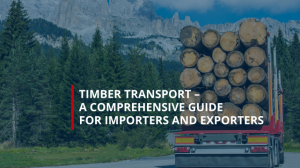

24/04/2025
ADR transport – everything you need to know about the carriage of dangerous goods
ADR transport – everything you need to know about the carriage of dangerous goods
Transporting dangerous goods is one of the biggest challenges in logistics. According to the ADR agreement (Accord européen relatif au transport international des marchandises Dangereuses par Route), such shipments must comply with strict regulations, ensure safety, and be properly marked. In this article, we explain what dangerous goods are, how they are classified, and the rules for road, rail, sea, and air transport.
What are dangerous goods?
Dangerous goods are substances and items that may pose a risk to human health, the environment, or property during transport. Their classification is based on the type of hazard they present. Road transport under ADR includes nine main hazard classes:
Classification of dangerous goods:
Explosives – dynamite, fireworks, detonators
Gases – propane, chlorine, nitrogen, acetylene
Flammable liquids – petrol, ethanol, methanol
Flammable solids – pyrophorics, flammable metals
Oxidizing substances and organic peroxides – hydrogen peroxide, nitrates, ozone
Toxic substances – pesticides, toxic chemicals
Radioactive materials – radioactive isotopes
Corrosive substances – sulfuric acid, ammonia
Miscellaneous dangerous substances and articles – lithium batteries, fireworks, unclassified chemicals
ADR transport – requirements and safety measures
Transporting dangerous goods requires:
– proper packaging and labeling of the cargo,
– use of specialized transport vehicles,
– a trained driver with a valid ADR certificate,
– transport documentation in compliance with regulations,
– emergency plans and protective equipment in case of an accident.
Means of transport for dangerous goods
Road transport
The most commonly chosen method for ADR shipments. Vehicles must be specially equipped (e.g., tankers with fire protection systems), and drivers must have valid ADR licenses. Proper vehicle marking and route compliance are also critical.
Rail transport
Special wagons are used for gases, liquids, and solids. Key requirements include proper labeling of wagons, cargo segregation, and emergency procedures.
Air transport
Conducted in accordance with IATA DGR regulations. Certified containers must be used, and both ground and air personnel must be trained. Airports must have designated zones for handling dangerous goods.
Sea transport
Carried out under IMDG Code guidelines. Each container with dangerous goods must be correctly labeled, secured, and reported to port authorities. Ships must be prepared to respond to emergencies.
Domestic vs. international ADR transport – key differences
Domestic transport:
Regulated by national laws and ADR-implementing regulations
Requires ADR driver certification and proper vehicle labeling
Procedures are simplified but still strict (e.g., tunnel transit restrictions)
International transport:
Includes shipments between EU countries and third countries (e.g., Ukraine, Belarus, Turkey)
Requires knowledge of local laws, border control procedures, and customs documentation
Often involves multimodal transport (road–rail, road–sea)
PKS International CARGO S.A. handles both domestic and international ADR transport – providing full logistics support, customs clearance at border crossings, and a fleet suited for various ADR classes.
Common mistakes in ADR transport
Despite regulations, the following issues frequently occur:
– Missing or incorrect transport documents (e.g., wrong UN number, no written instructions)
– Improper vehicle marking
– Damaged or unsuitable packaging
– Untrained drivers or personnel
– Unintentional ADR transport – for example, a client failing to disclose that their goods are hazardous
Consequences: heavy fines, vehicle detention, or loss of transport authorization.
Practical guide for clients ordering ADR transport
If you’re a manufacturer, importer, or exporter of dangerous goods, remember to:

→ Use the Safety Data Sheet (SDS) to identify the UN number and hazard class.

→ Ensure the ADR transport document, written instructions, and emergency contact are in place.

→ Packaging must bear the UN mark and be durable and leak-proof.

→ Partner with companies that have an ADR-compliant fleet, trained drivers, and appropriate CMR/ADR insurance.

→ They can help declare the goods, prepare the documentation, and navigate border procedures efficiently.
Summary
ADR transport is a complex and demanding process involving high safety standards and detailed regulations. Whether you’re shipping flammable, toxic, or radioactive materials, proper classification, documentation, and preparation are essential. Choosing an experienced carrier and working with a professional customs agency like PKS International CARGO S.A. ensures safe and compliant transport. This helps avoid costly mistakes, speeds up delivery, and protects your cargo – and people.
Looking for the best carrier on the market? Choose safety and experience.
Contact us now and let's talk about your business needs.


Household goods for relocation – what you should know before customs clearance

Road transit from China through Poland to Europe – handling LCL shipments under T1 procedure

International trade – which transport method to choose for your company?

Timber transport – a comprehensive guide for importers and exporters

